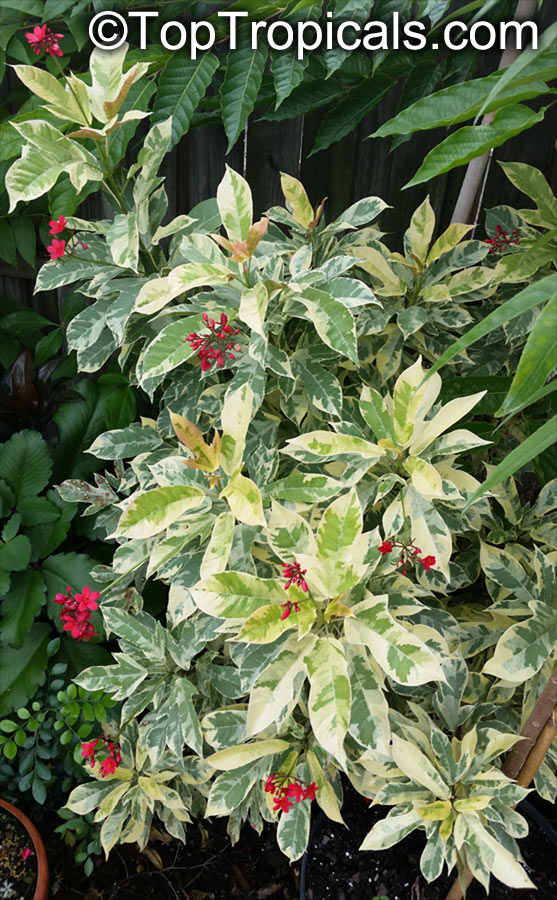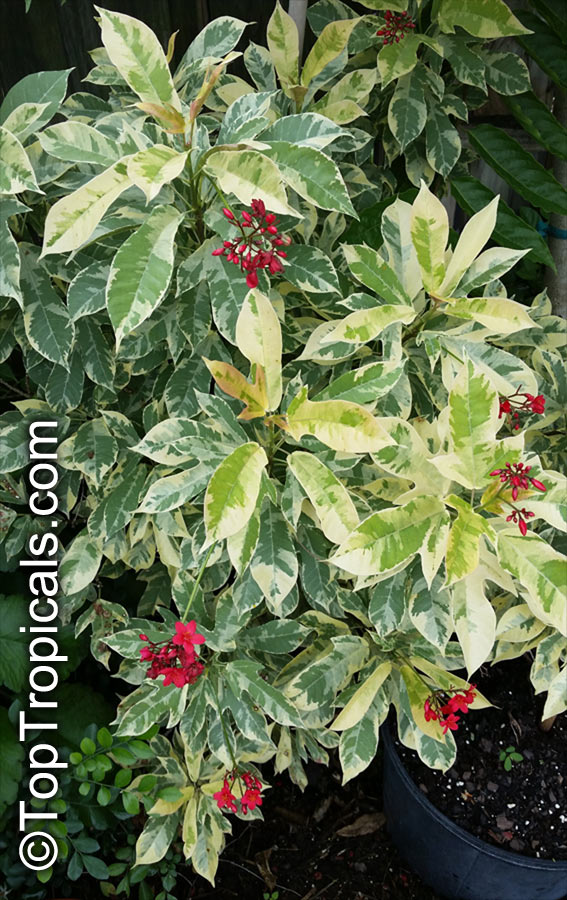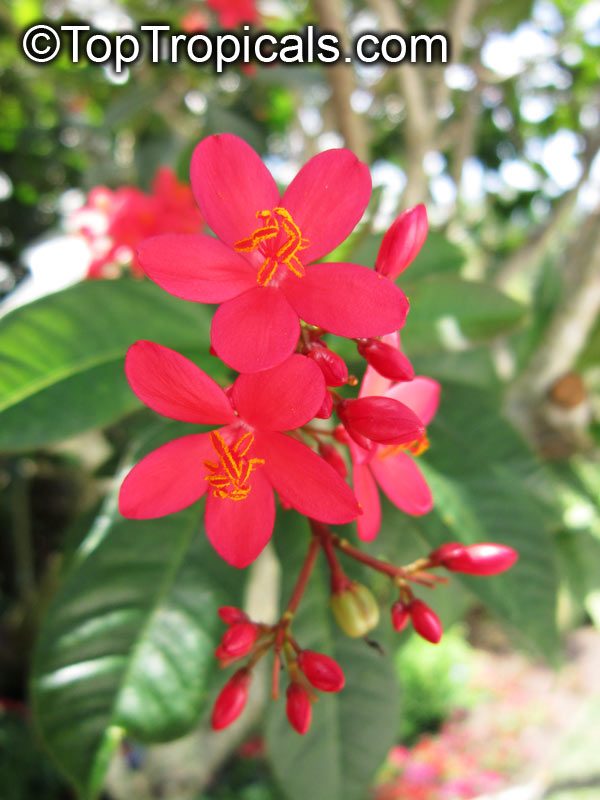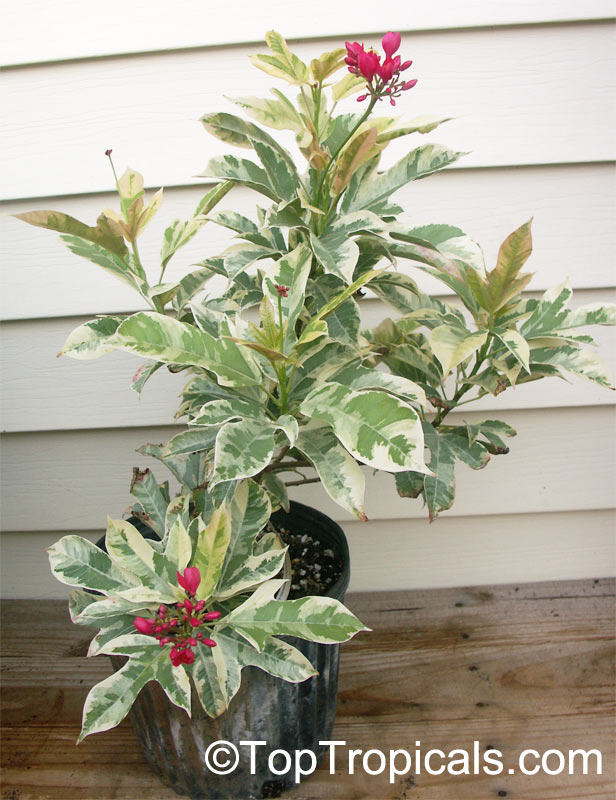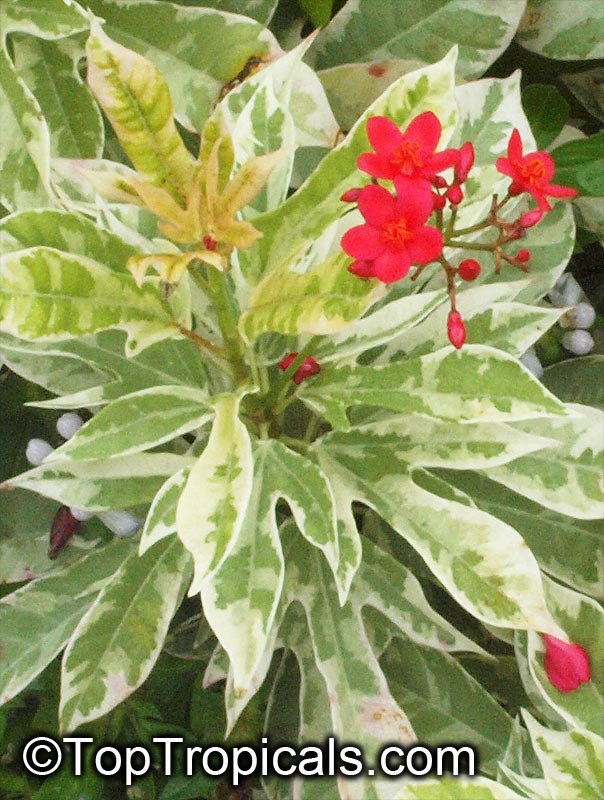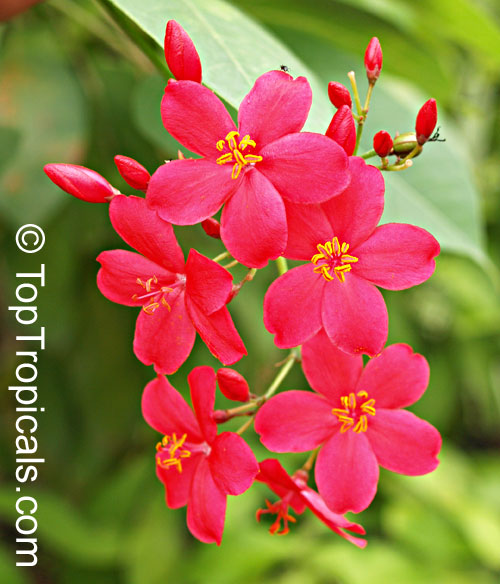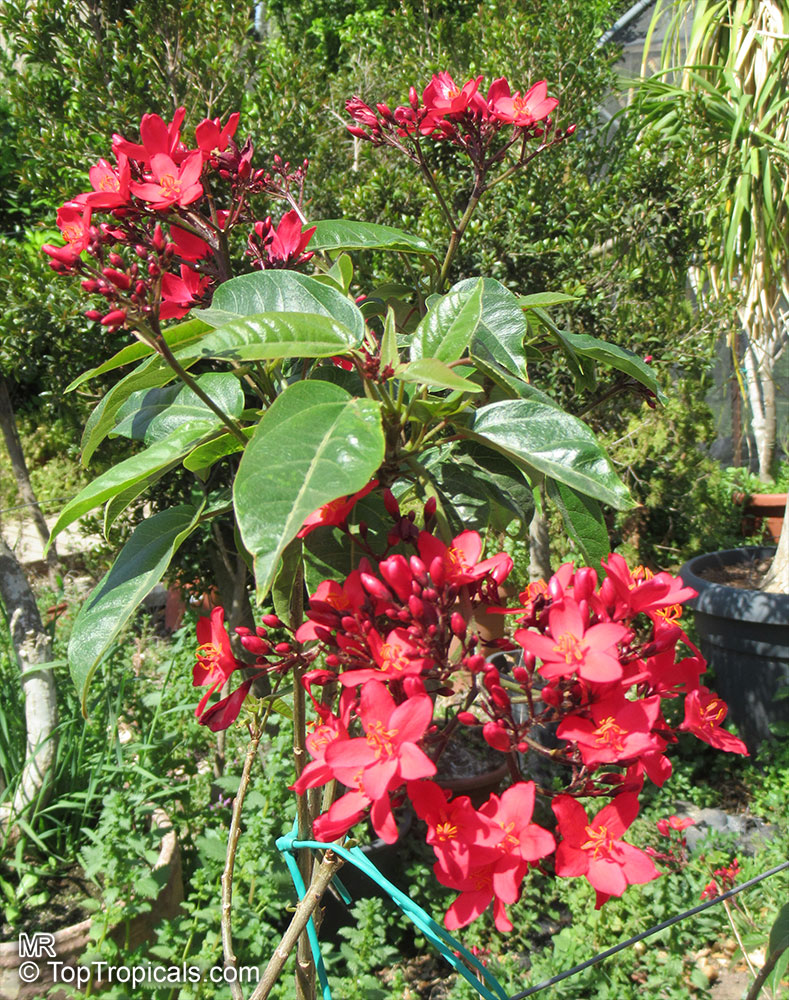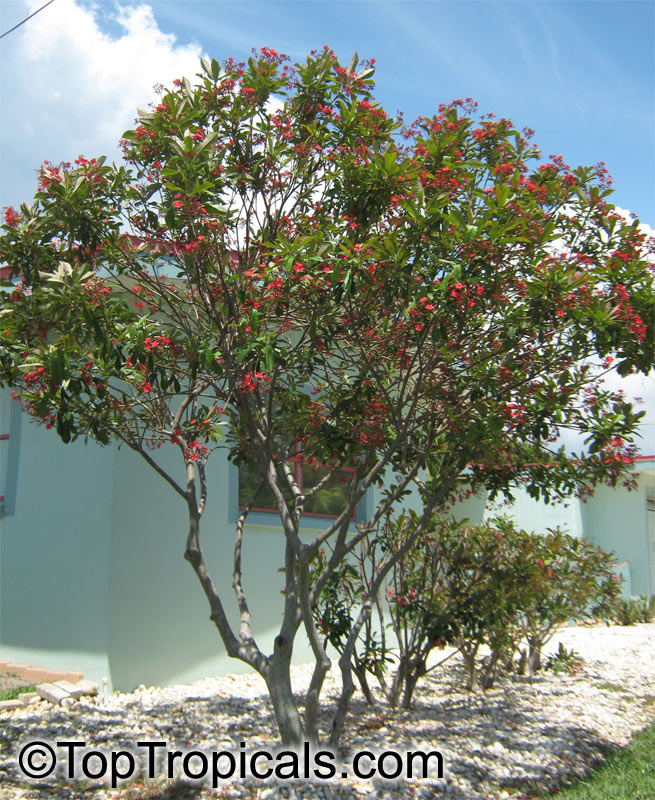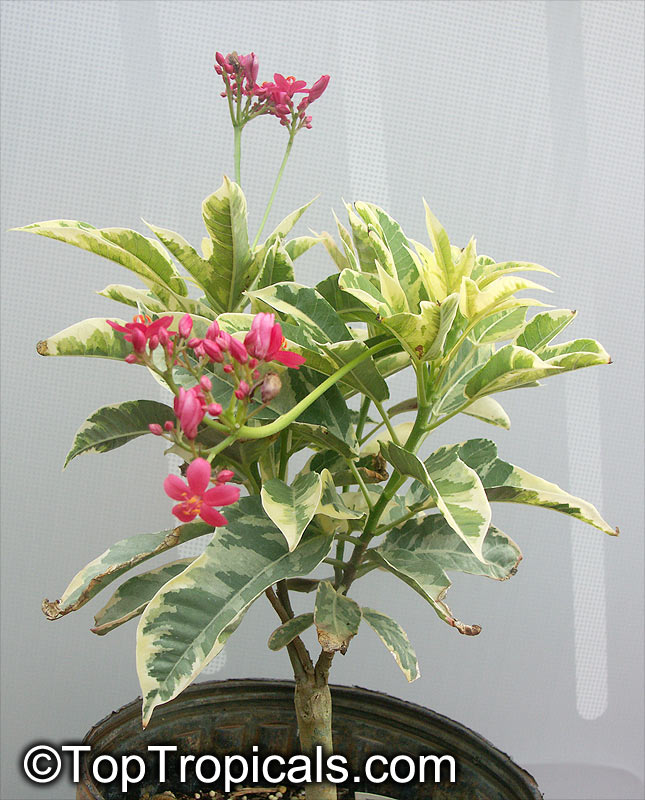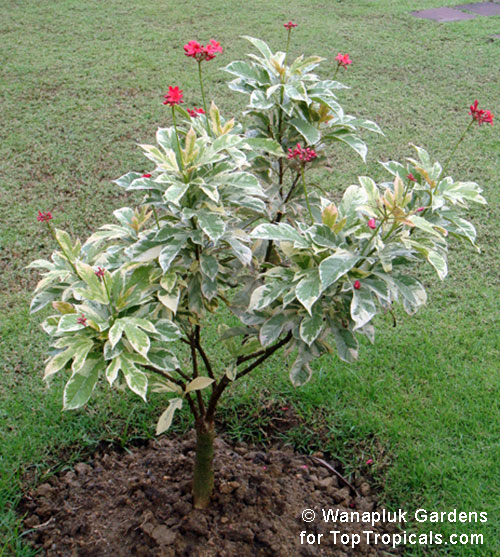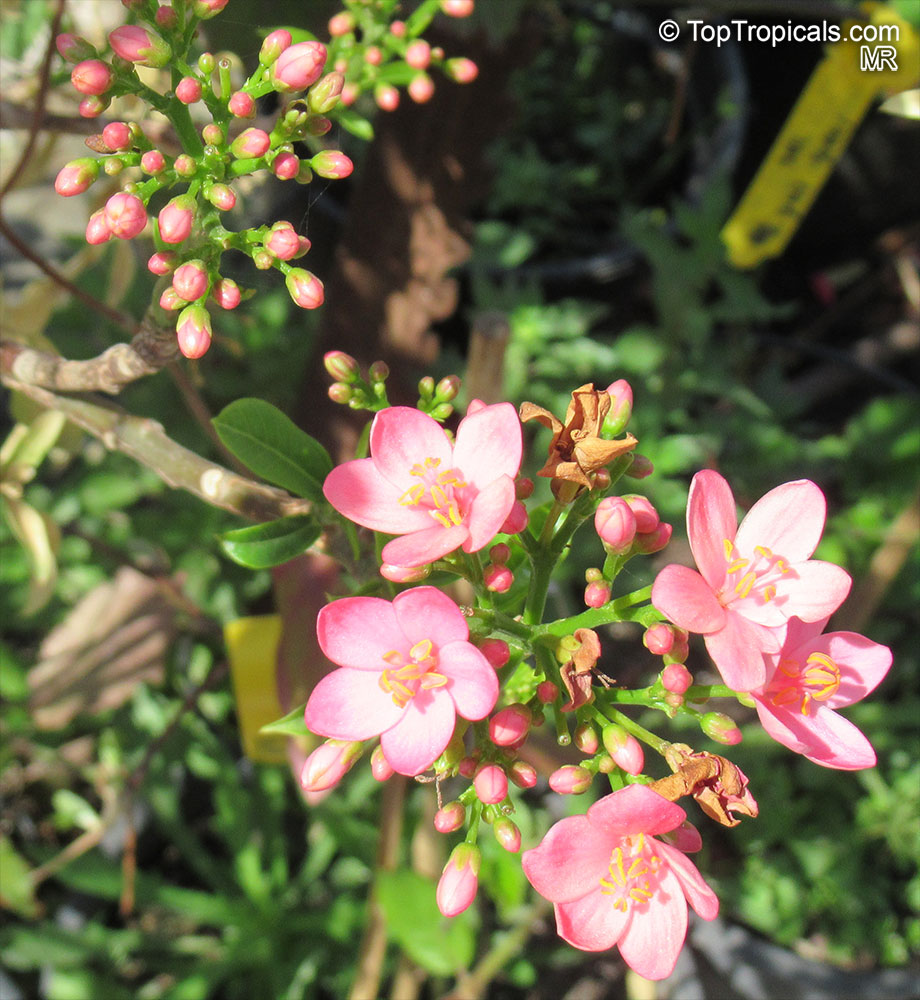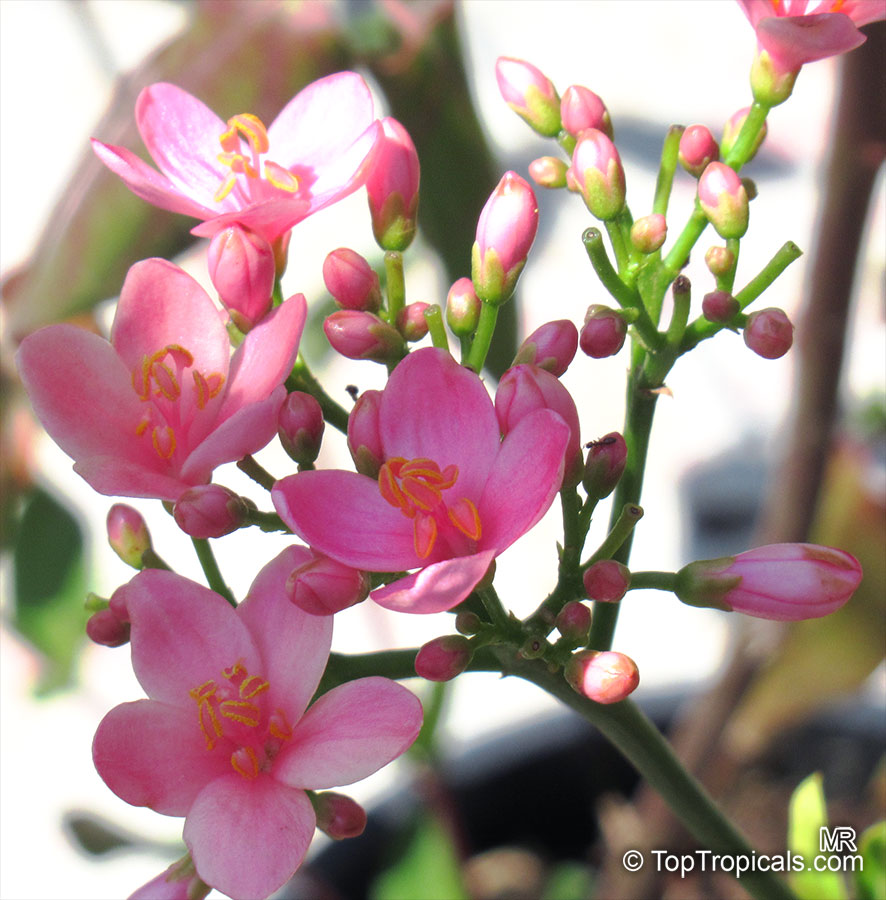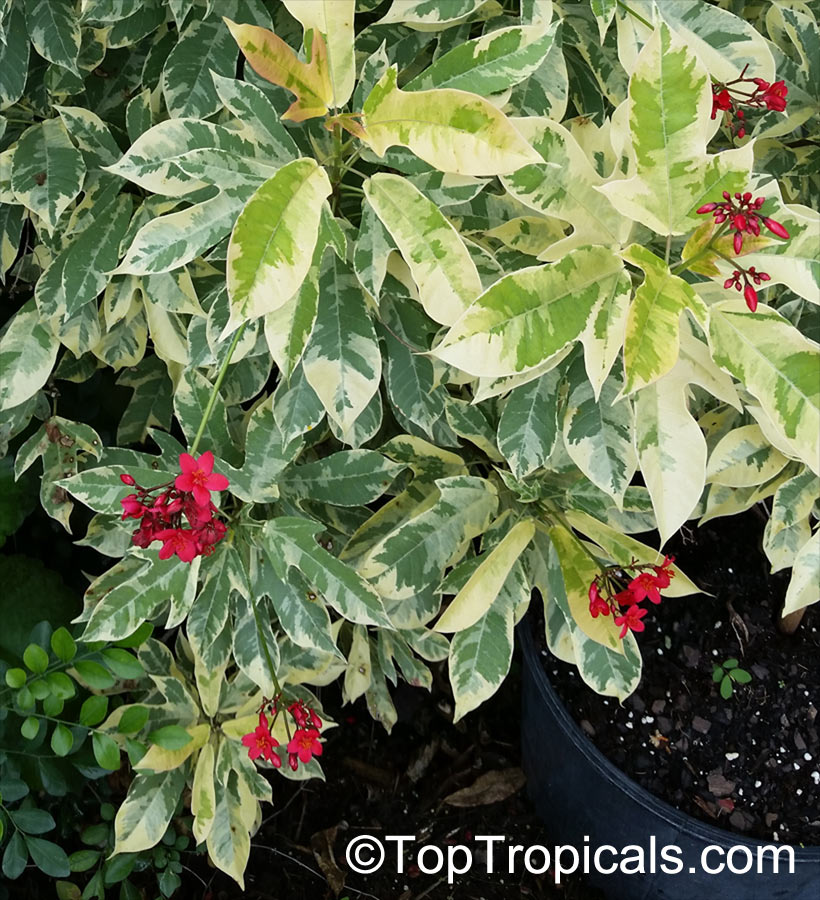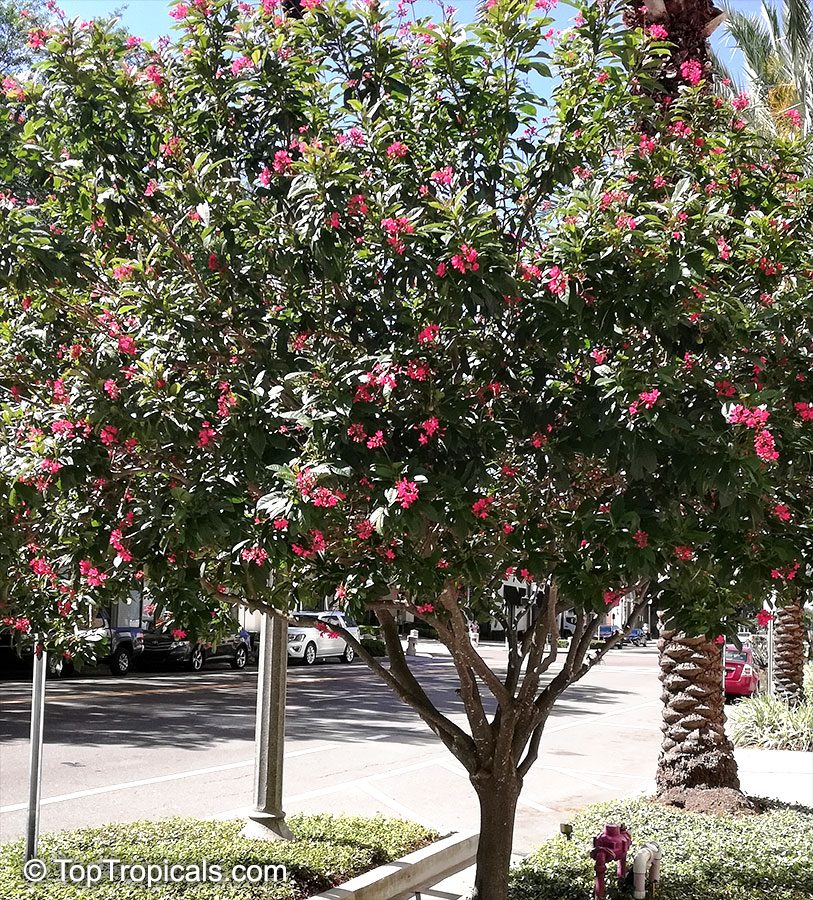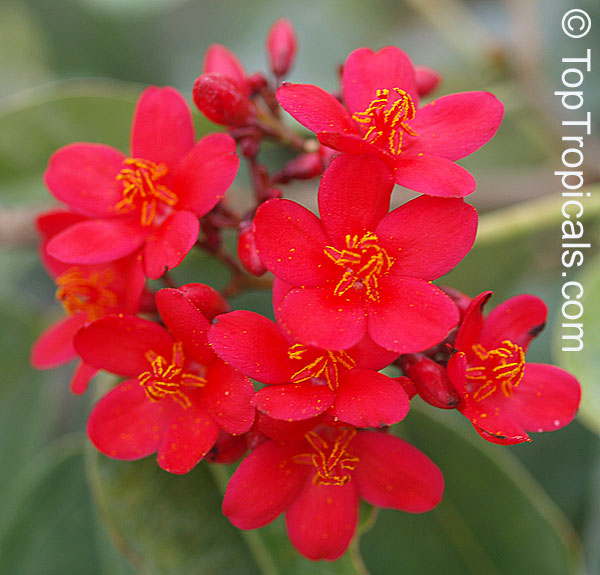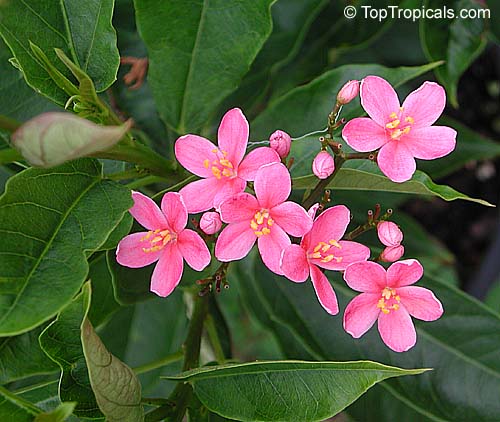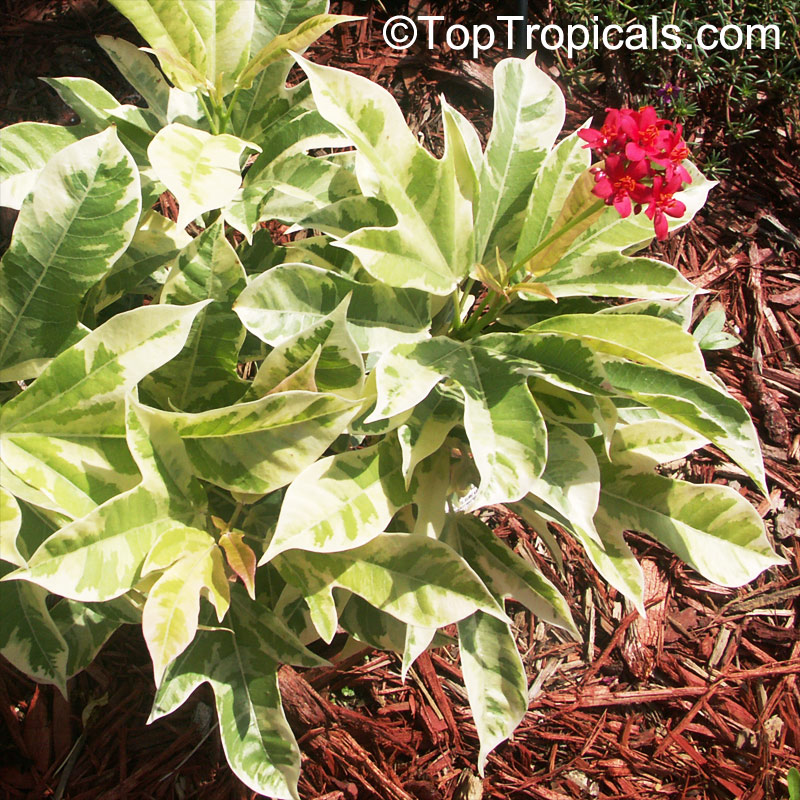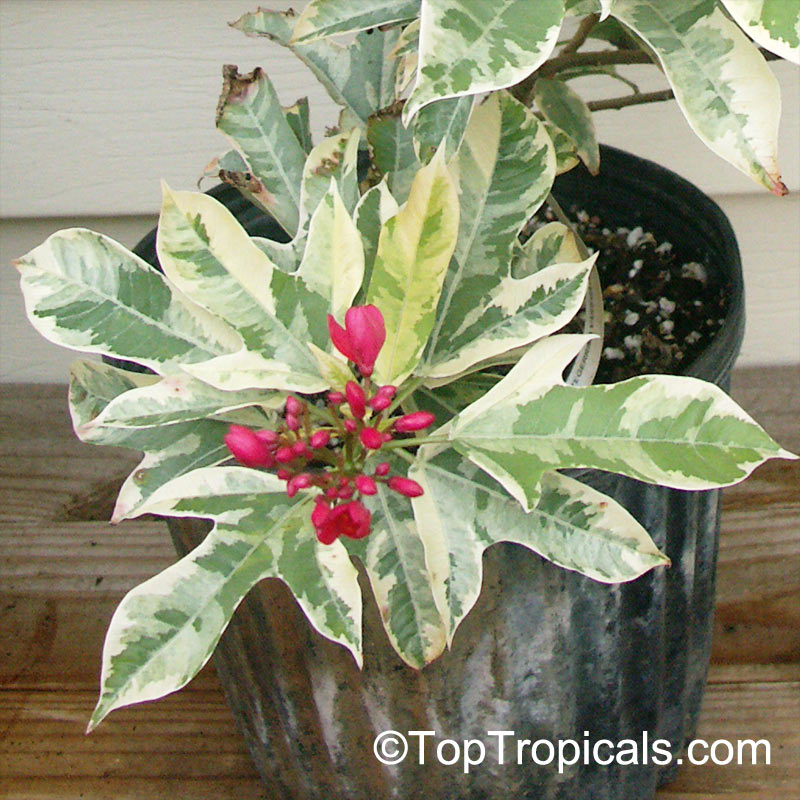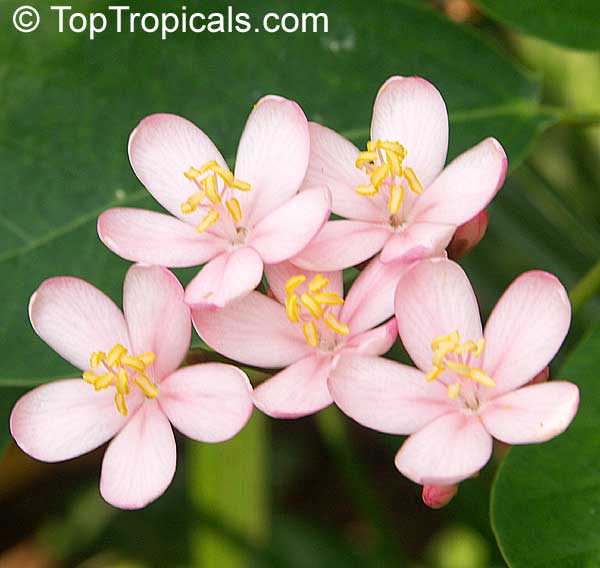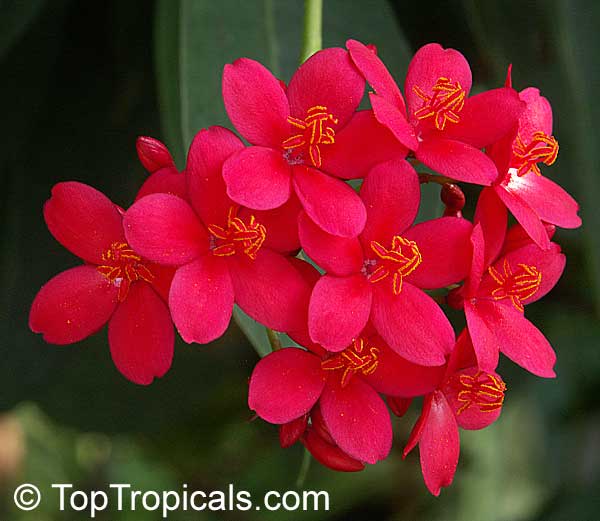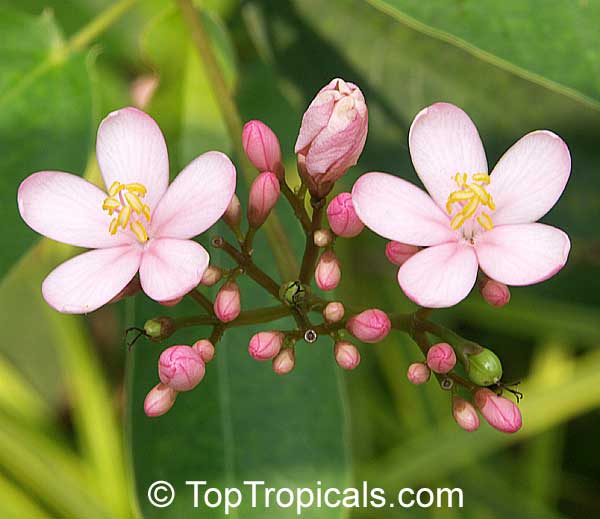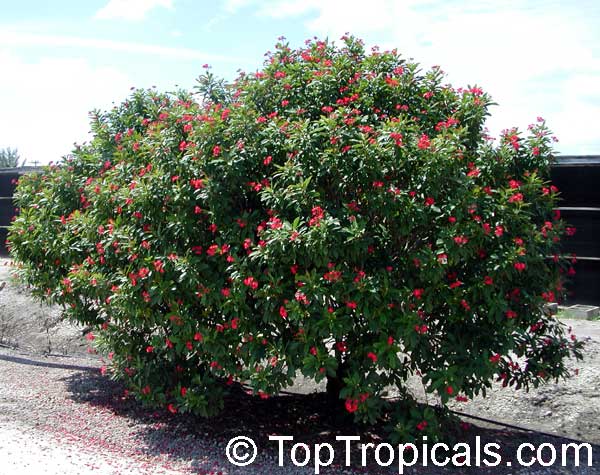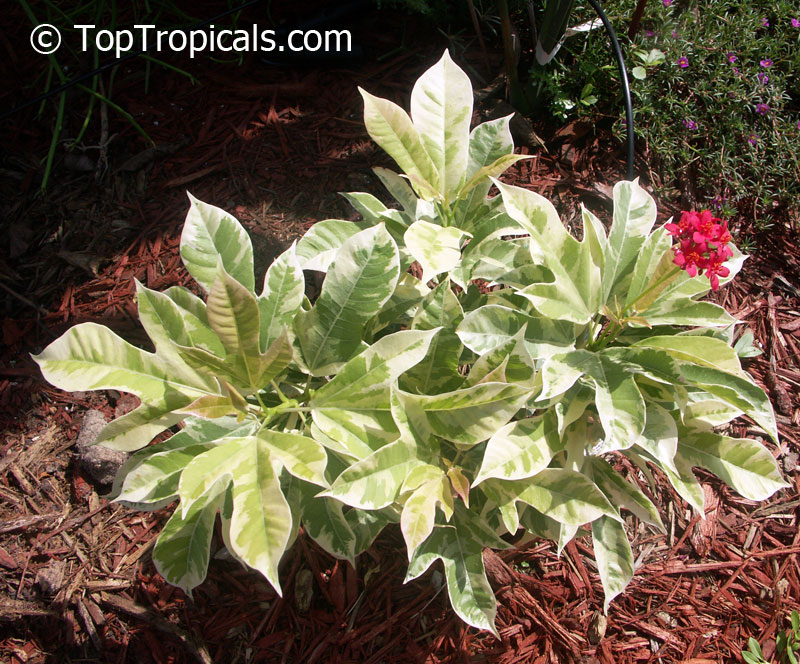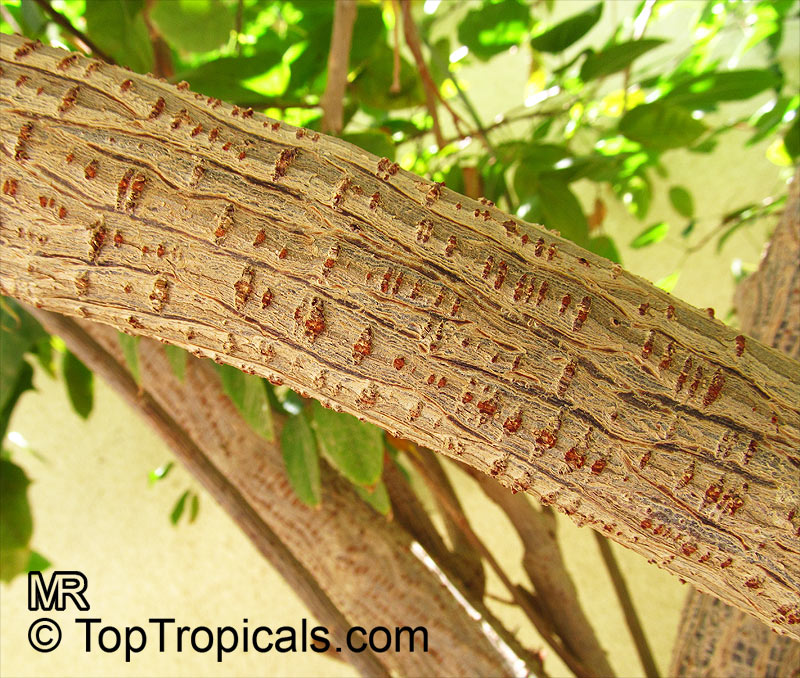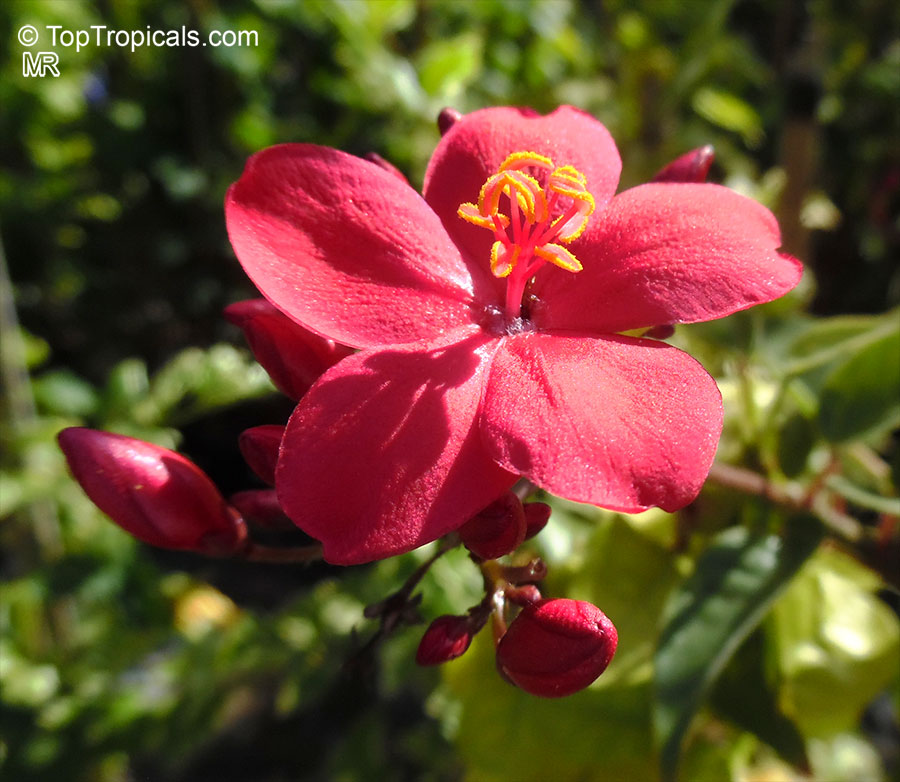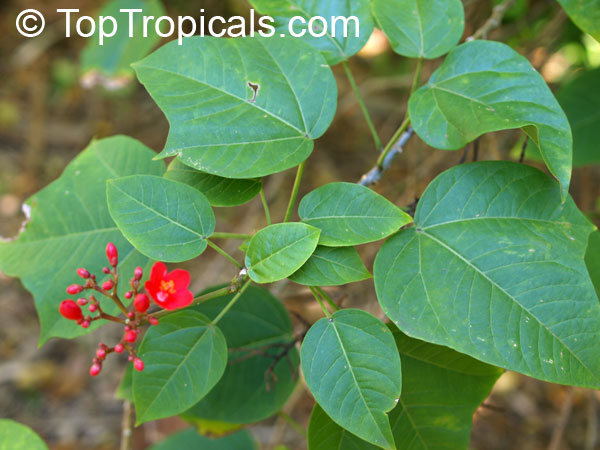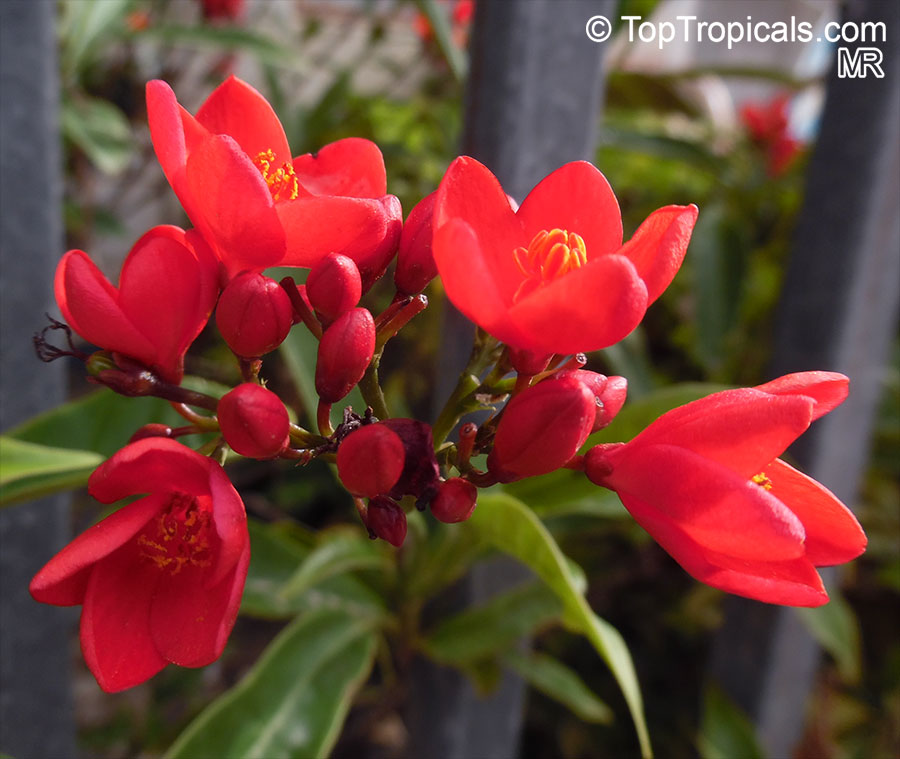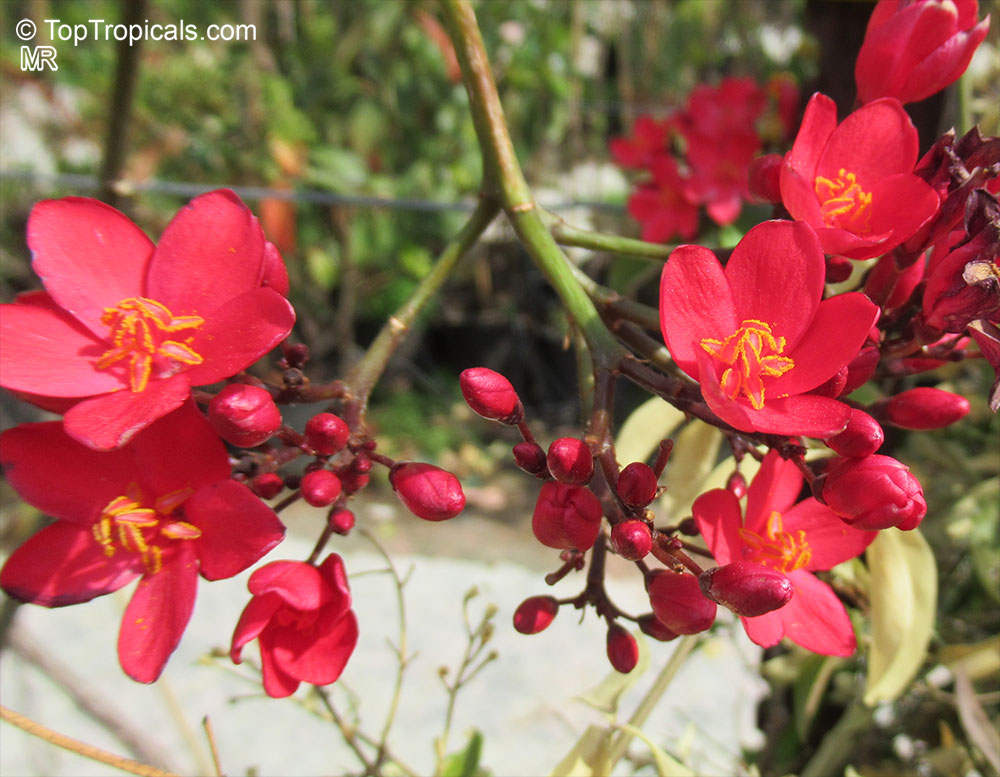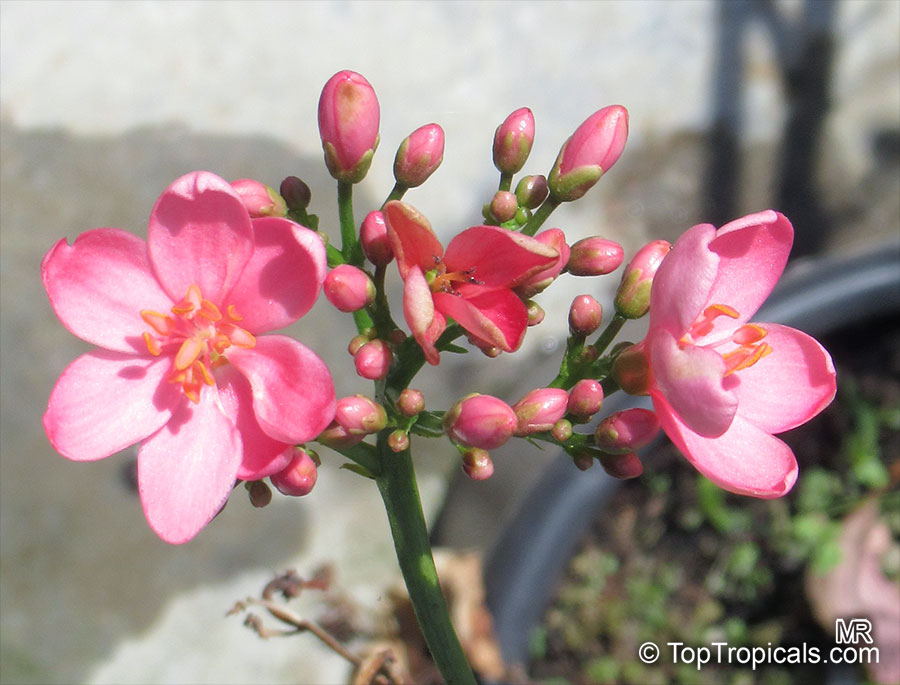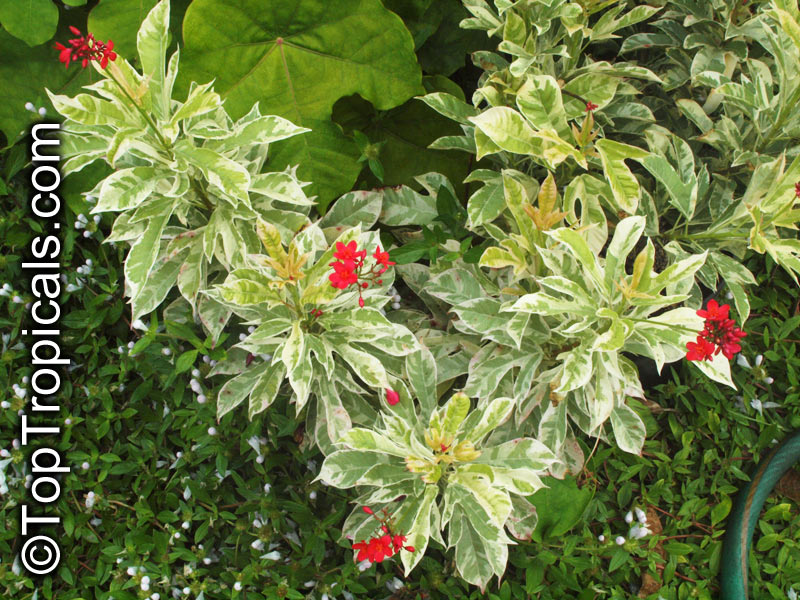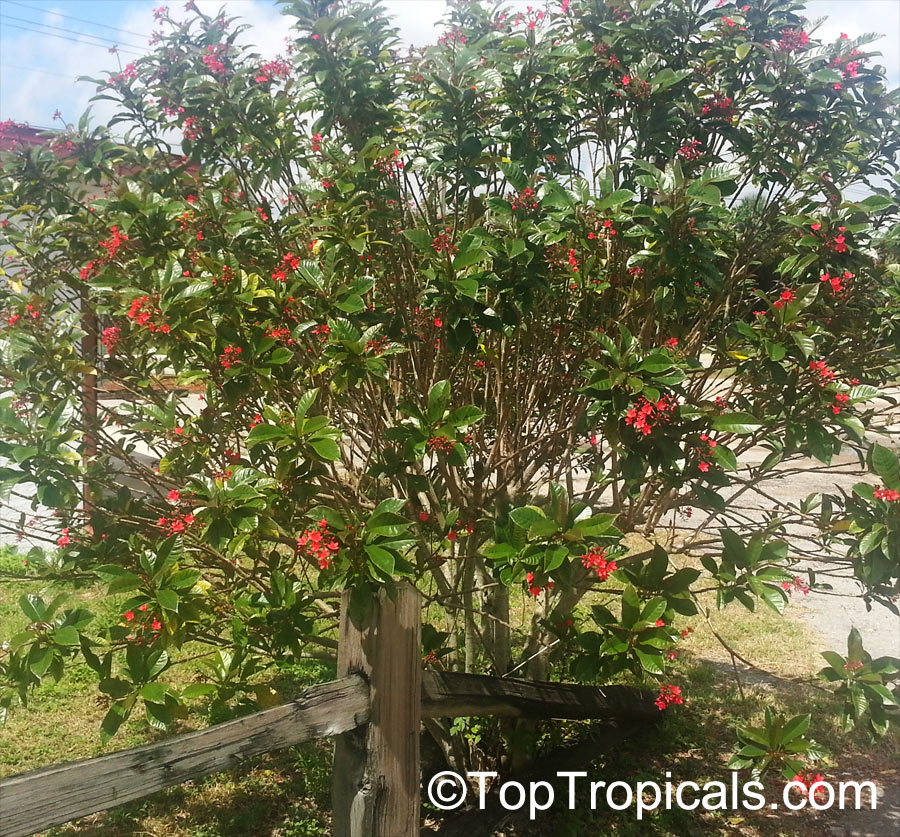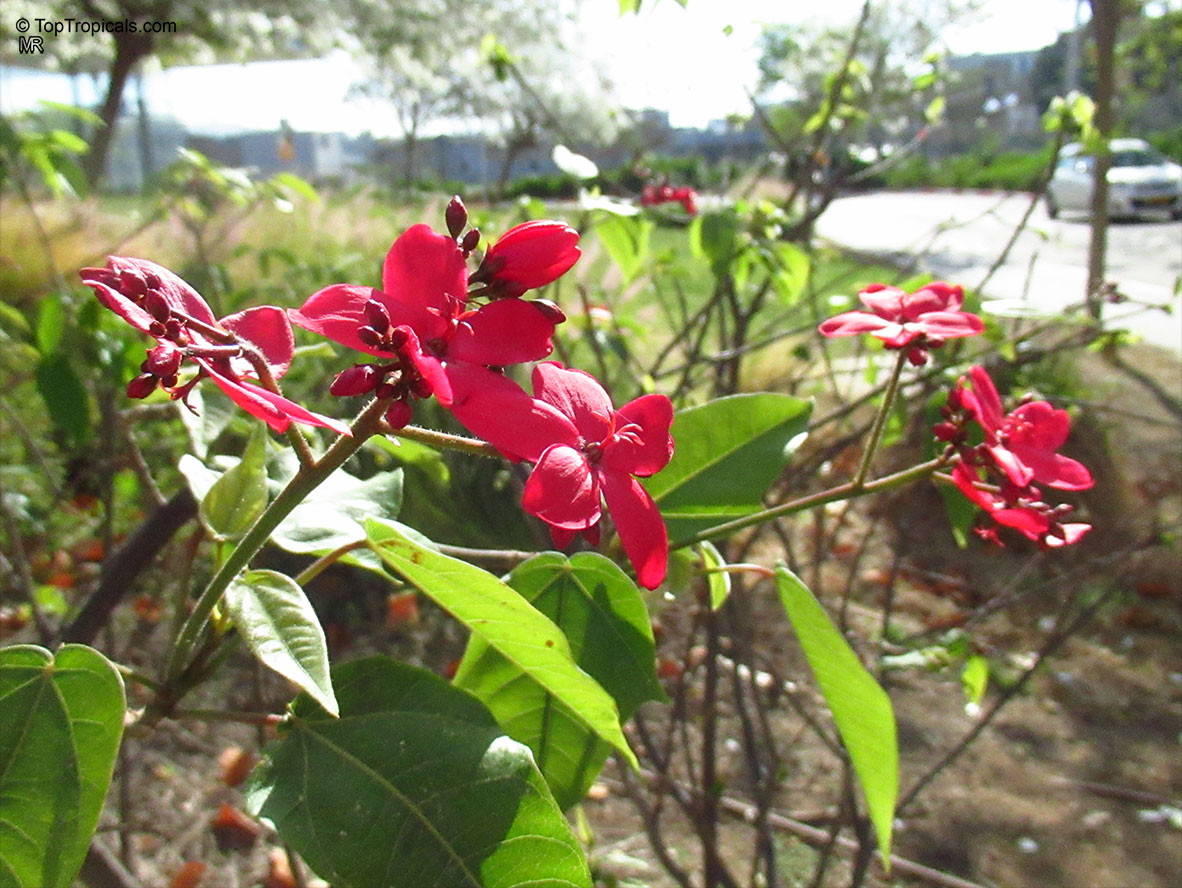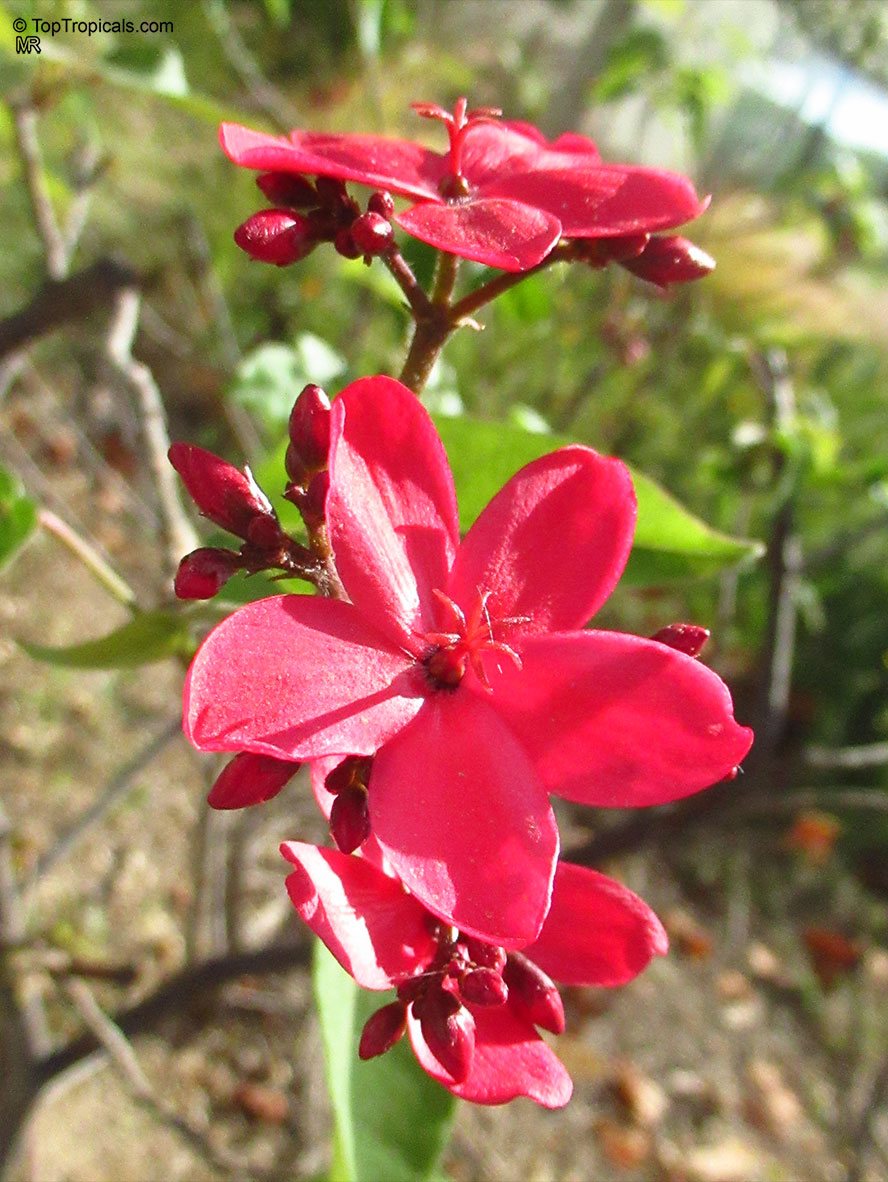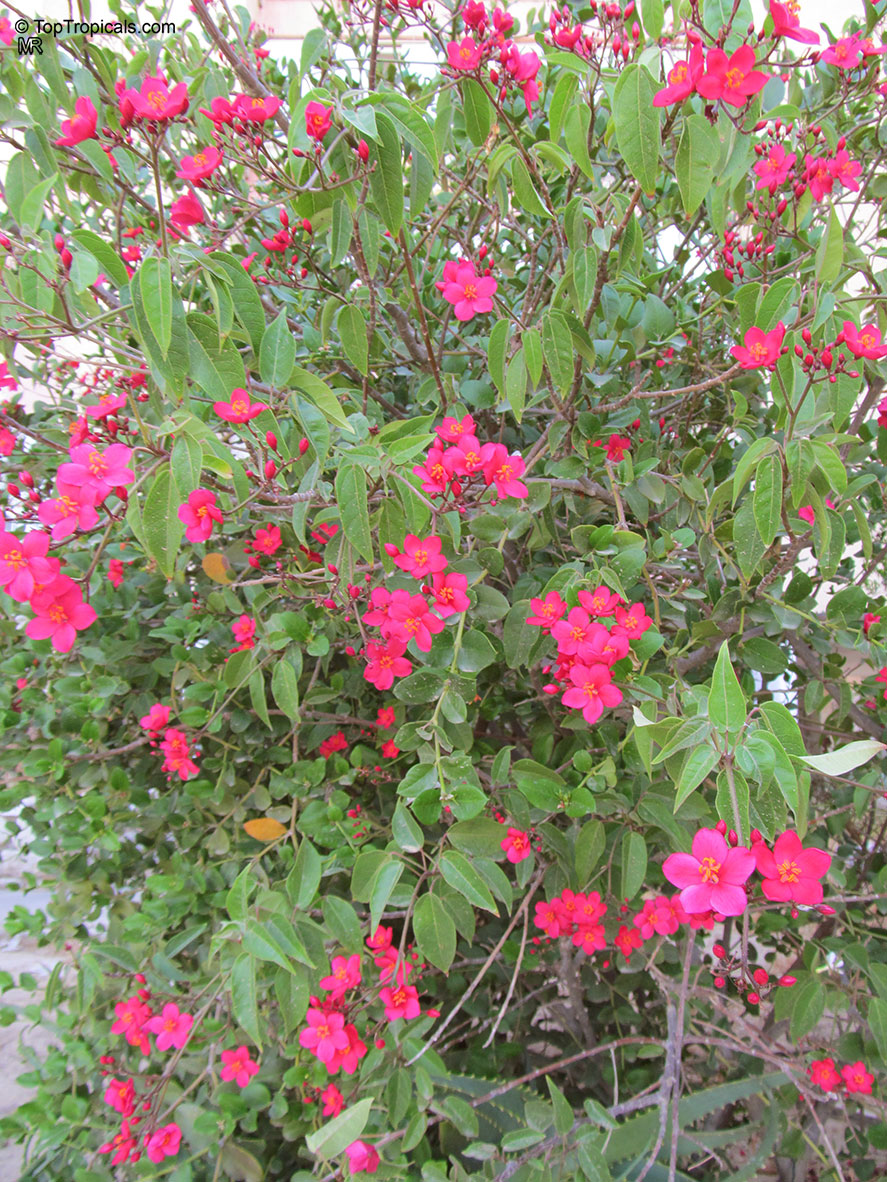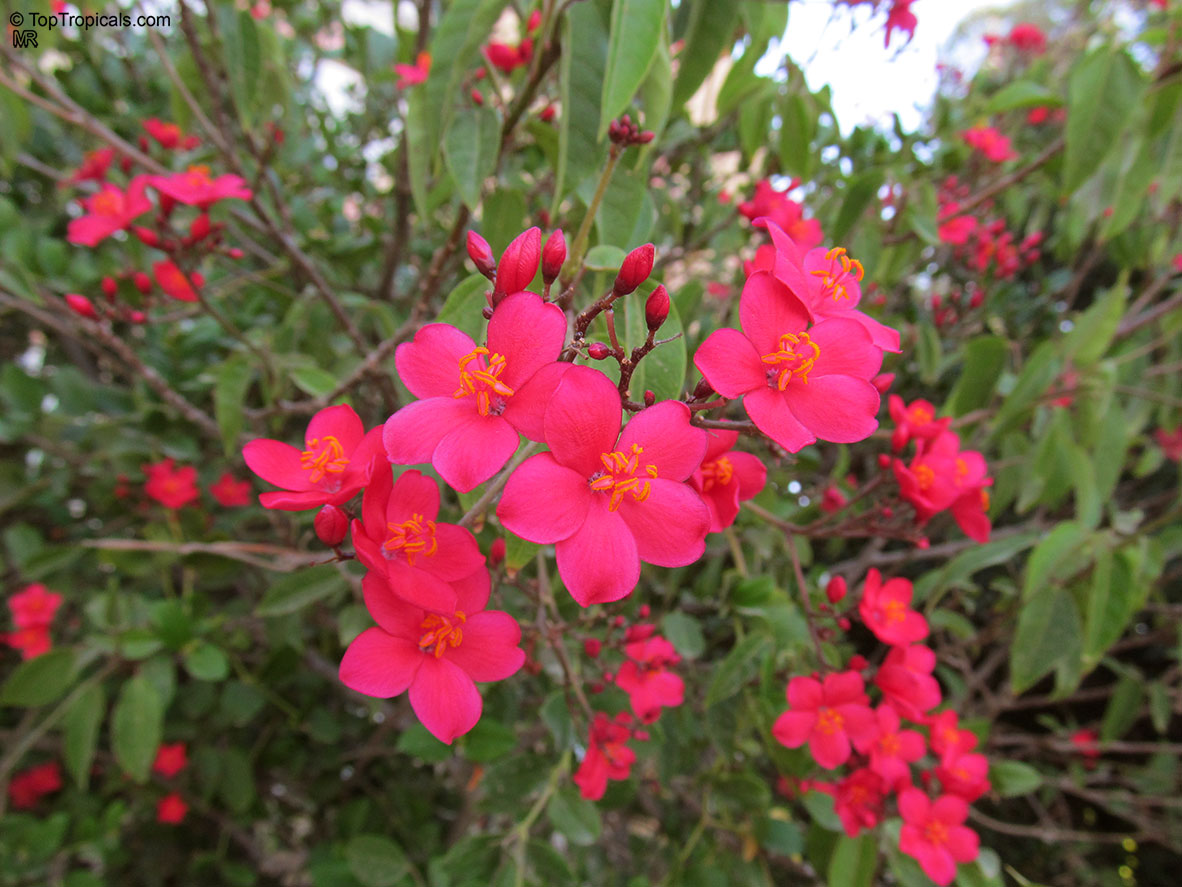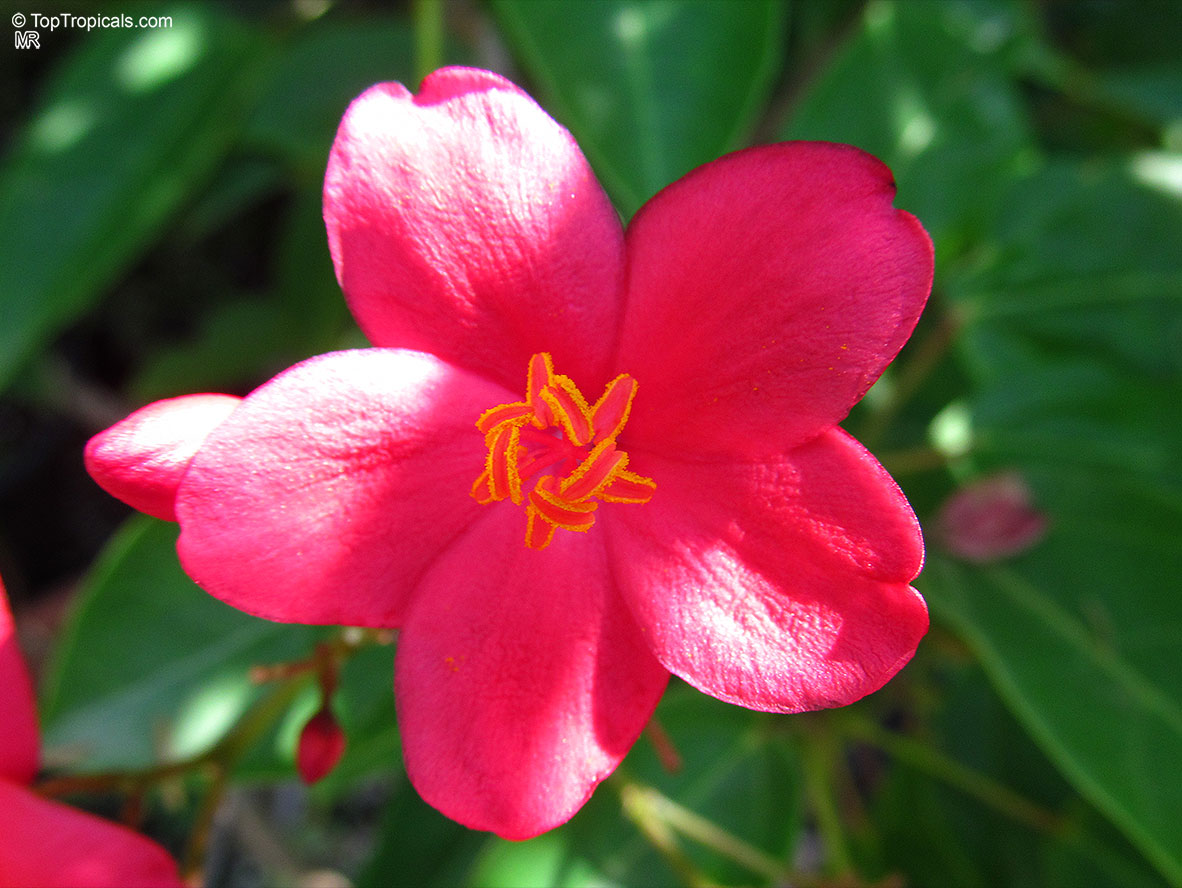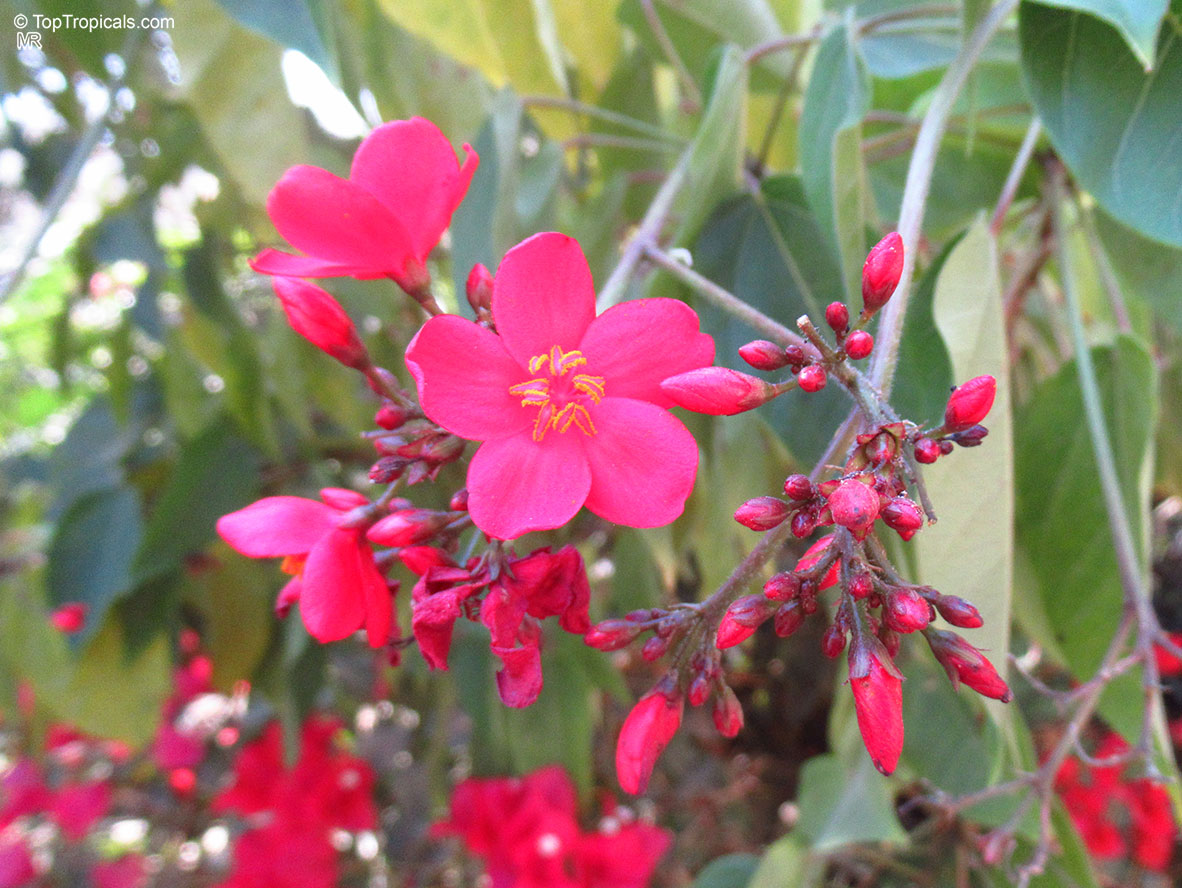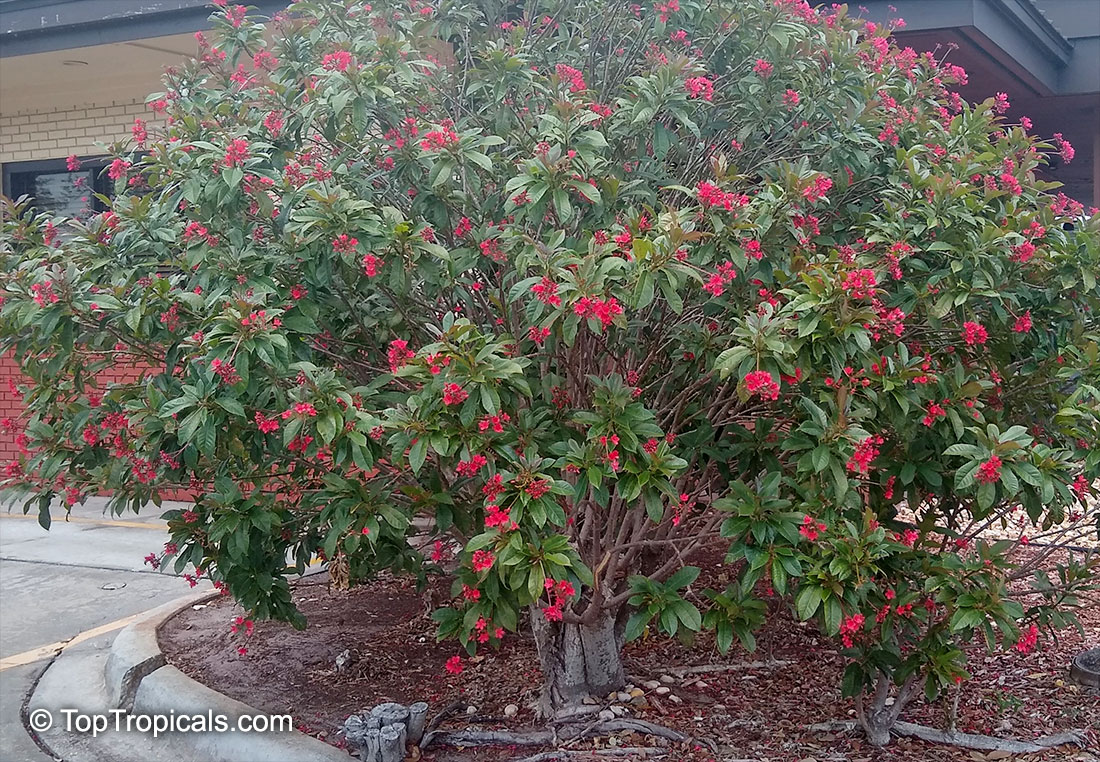Jatropha integerrima (Peregrina)
Top Tropicals Plant Encyclopedia
Botanical names: Jatropha integerrima, Jatropha pandurata
Common names: Peregrina, Spicy Jatropha, Coral Plant, Physic Nut
Family: Euphorbiaceae
Origin: Cuba











Jatropha integerrima, also known as Peregrina, is a striking plant with glossy leaves and clusters of scarlet flowers. It grows into a shrub or small tree with a rounded or narrow domed form, reaching a height of up to 15 feet and a spread of 10 feet. In cultivation, it is often smaller and may have several slender trunks, although it can be pruned to a single trunk. The leaves of Peregrina are highly variable, ranging from entire and elliptic or oval to fiddle-shaped or three-lobed. They are bronze when young and brownish on the underside. The flowers, which are about an inch across, appear in multi-flowered terminal clusters almost all year round. There is also a smaller, more compact cultivar called 'Compacta.'
Peregrina is tolerant of a wide range of soil types as long as they are well-draining. It blooms on the current year's growth, so it can be pruned at any time. It responds well to pruning and can be kept as a shrub, trained into a tree form, or used in espalier. It is also drought-tolerant and attracts butterflies and hummingbirds.
In addition to being a beautiful addition to gardens, Peregrina is also a good plant for seaside gardens due to its salt tolerance. While it can withstand temperatures down to the mid-30s for a short period of time, it is not reliably cold hardy in USDA Zone 9 and southward. In colder zones, it can be grown in a container and brought indoors during the winter. To plant Peregrina, choose a location with full sun to part shade and provide regular water. If grown in a container, use a well-draining soil mix and water regularly. When planting in the ground, enrich the soil with compost or rotted manure and mulch with a thick layer of organic material to retain moisture. Prune as needed to maintain the desired shape and size. It is important to note that Jatropha, like many euphorbias, contains a milky sap that can irritate sensitive skin and all parts of the plant are poisonous if ingested.
Similar plants: Jatropha integerrima (Peregrina)
Recommended Fertilizer: SUNSHINE Megaflor - Bloom Nutrition Booster
